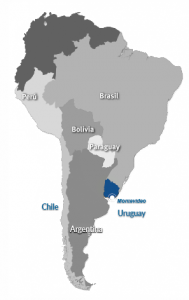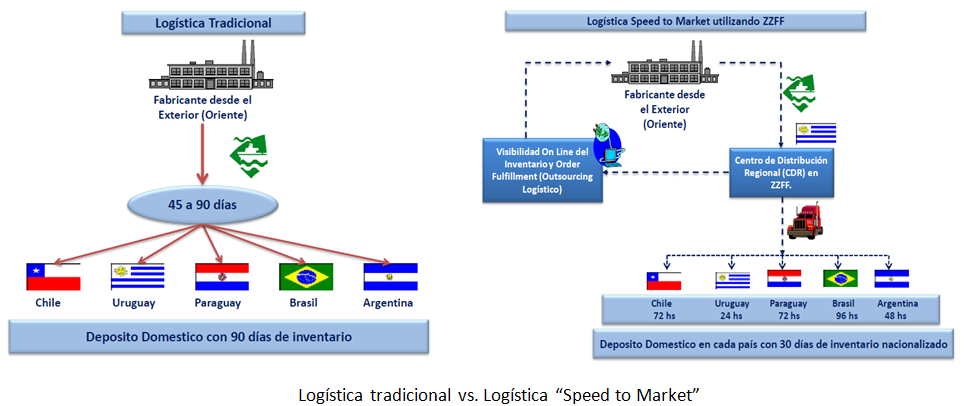-
Official nameRepública Oriental del Uruguay
-
LocationSouth America, bordering Argentina and Brazil
-
CapitalMontevideo
-
Surface area176.215km², 95% of the territory has soil suitable for agriculture and livestock activities
-
Population (2013)3,4 million
-
Population growth (2013)0,3% (annual)
-
Per capita GDP (2013)US$ 16.421
-
CurrencyUruguayan peso ($)
-
Literacy98,4%
-
Life expectancy at birth77 years
-
Form of governmentDemocratic republic with Presidential system
-
Political divisions19 Departaments
-
Time zoneGMT – 03.00
-
Official languageSpanish

Source: Uruguay XXI
General Characteristics
- Uruguay offers a high degree of safety and comfort.
- The climate is pleasant throughout the year, summer being the peak season for tourism.
- For many years Uruguay has had a strong political and social stability, supported by a consolidated democracy.
- The political system is based on a democratic republic with presidential system. Presidential and parliamentary elections are held every five years. There are a plurality of political parties.
- The legal system is based on laws passed by the Parliament and promulgated by the Executive Branch. There are special judges for civil, customs, bankruptcy, commercial, labor and criminal matters, and specialized criminal courts for organized crime and family issues.
- Visitors only require a valid passport to enter the country. There are some exceptions in which visas are required additionally. MERCOSUR citizens only need identity cards.
At present, our country is positioned as an extremely attractive site for the development of logistics activities, not only through the support of the advantageous legal framework currently in force in Uruguay, but also through the development of Value Added Logistics (VAL) operations from its CDR installed in Free Zones, Free Ports/Airports and Extra-port (or fiscal) warehouses.
These centers are pushing for a sustained professional improvement and development of the storage systems, movement of goods, information systems, lay-out of facilities, and development of state-of-the-art operational procedures, with the processes certified based on the ISO 9001, ISO 14001 and OSHAS 18001 standards, to name a few; that makes it possible for a hub to reach the excellence of services described below.
Here is a list of the main advantages offered by Uruguay as a Regional Distribution Center to the companies that have decided to centralize their logistics operations in our country:
– Centralization of inventories with a high flexibility in terms of volume and design.
– Long-term collaborative supply strategies.
– Reduction of administrative costs through centralization of the regional fixed structure.
– Reduction of the safety inventories in each country of destination, resulting in a reduction of financial costs.
– Shelter during uncertainty and turbulences of global economy.
Added to the above-mentioned advantages, the key strength of CDRs is their potential for implementing Just-In-Time operations, reducing lead times for final customers, replacing the delivery directly from the manufacturer by deliveries from centers located just a few hours away from the end market. This has opened new opportunities replacing the “Traditional” logistics for the “Speed to Market” logistics, with a rapid response capacity in volume, production and client times. Source: Juan Opertti

